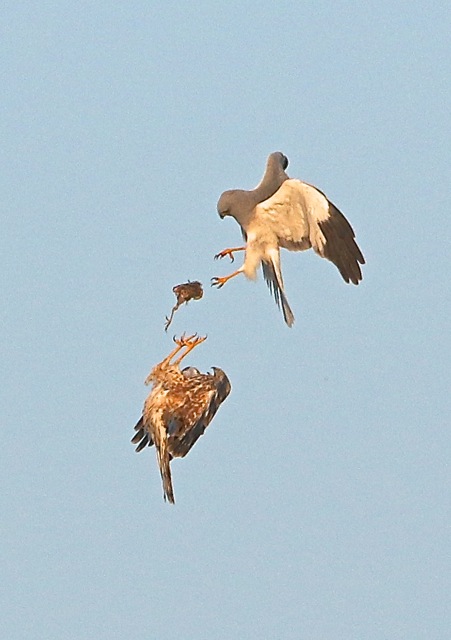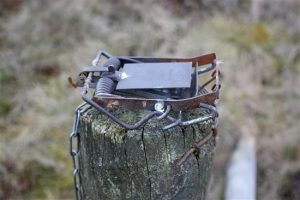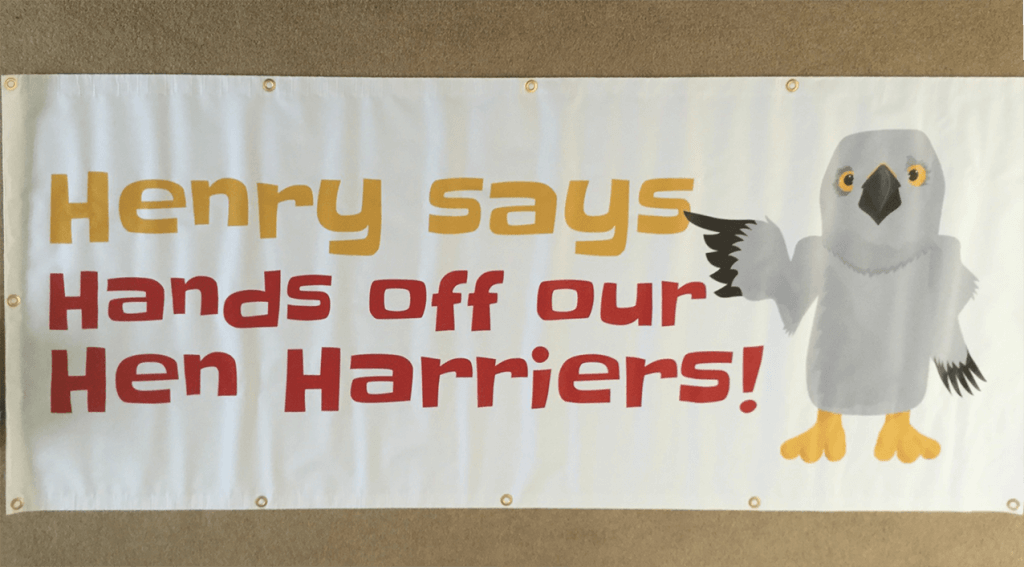
Wouldn’t you love to be able to see a food pass by a pair of Hen Harriers in a National Park near you?
The Yorkshire Dales National Park has much excellent habitat for Hen Harriers – it ought, with the adjacent Nidderdale AONB, to have at least a dozen nesting pairs. Since 2000, there should, therefore, have been over 200 Hen Harrier nesting attempts in this area.
How many do you think there have been? How many pairs are there this year? How many were there last year?
There are no nesting Hen Harriers in the Yorkshire Dales this year, or last year, in fact the last recorded successful pair was in 2007 and the total number of successful nesting attempts since 2000 is just 3 pairs. The Yorkshire Dales National Park scores 3 out of 200 for Hen Harriers.
Bowland Betty, a much-travelled female Hen Harrier was shot and died in the Yorkshire Dales in 2012 – she was found dead on a grouse moor.

This spring a gamekeeper was filmed setting a trap on top of a pole on the Mossdale Estate grouse moor near Hawes within the YDNP – setting traps in such a way has been illegal for over a century. This way to kill birds of prey, favoured by Victorian gamekeepers, persists in a National Park set up to protect and enhance natural beauty.
Whilst intensive grouse shooting continues in the British uplands you are very unlikely to see a Hen Harrier food pass in a National Park. Yes, you’ll see dry stone walls, and lots of Red Grouse, and some great views, but ‘protected’ wildlife has been ripped from these National Parks through greed and the pursuit of personal profit for the few.
There have been years of talk and negotiation and things have only got worse. In 2000 the YDNP set a target of five pairs of Hen Harriers to be nesting in the National Park by 2007 – that was not reached in any year, and there were only three successful nesting attempts in all those years. Since then there has been no successful nesting at all.
If you are shocked at what is happening in this and other English National Parks then why not meet up with other like-minded people in the Yorkshire Dales National Park on Saturday at midday? More details to follow on Wednesday.
And please add your name to more than 44,000 others calling for a ban on driven grouse shooting.
Some facts and references for any new readers;
Hen Harriers are fully protected by law
Hen Harriers are killed because they eat Red Grouse that people will pay to shoot for fun
There should be 2600 Hen Harriers nesting in the UK but because of systematic illegal persecution by shooting interests there are only c650 pairs – and they are almost completely absent from grouse moors.
England should have c330 pairs of nesting Hen Harriers – this year it has ‘a tiny handful‘
[registration_form]

Having visited some of the North Wales moorlands in the last few weeks, the situation was dire Mark. I was hoping to see at least 1 hen harrier (a food pass would have been brilliant), to hear or even see some Black Grouse lekking, Red Grouse, Merlin, Curlew, Golden Plover, but nothing apart from some Skylarks, Meadow Pipits and a Cuckoo – I honestly couldn’t believe it – I felt totally depressed and have been ever since. I don’t know what the RSPB are doing to help our upland birds, there wasn’t much evidence to support it.
The only “food pass” we’re likely to see is at a Marks & Spencer food store where a lead-contaminated frozen Red Grouse goes from freezer counter to shopping basket.
Perhaps a photograph of such would make this year’s BBC Countryfile calendar?
No chance! Its the BBC don’t forget!
The 2002 paper mentioned in Mark’s link to ‘status of HH in the YDNP’ is at
http://publications.naturalengland.org.uk/file/114034
It is worth reading but it might feel a lot like deja vu.
15 years later and here we are at the same spot and nothing has changed.
It includes an extremely revealing graph of its inevitable extinction with a year on year decline in successful breeding attempts from 1994 to 2001 (exception being 1999 which was slightly better than 1998). Inevitable unless some real action is taken and the only action is the ban.
The 62 years of illegal killing has disqualified the grouse lobby from any benefit of the doubt. Has disqualified the grouse lobby from any form of negotiation at the merry-go-round table where lots of fun is had by all but no one gets anywhere and everyone feels a bit dizzy.
Meanwhile to grouse shooters toast away.
Cheers.
Then you can read the The second Biodiversity Action Plan for the
Yorkshire Dales National Park 2011 (updated 2015)
http://www.natureinthedales.org.uk/bap/2013-revision-2020-Vision-Bird-SAPs.pdf
I read it and in the mood of Hugh Gilling (above) these word of the Dylan came to mind (chorus removed because couldn’t find any alternative rhymes for Valerie and Vivian.
‘Too much of nothing
Can make a man ill at ease
One man’s temper might rise
While another man’s temper might freeze
In the day of confession
We cannot mock a soul
Oh, when there’s too much of nothing
No one has control
When there’s too much of nothing
It can ’cause a man to weep
He can walk the streets and boast like
Of what it’s like to keep
But it’s all been done before
It’s all written in the book
And where there’s too much of nothing
Nobody should look
And too much of nothing
Can make a man a liar
It can ’cause one man to sleep on nails
It can ’cause others to eat fire
Everybody’s doin’ somethin’
I heard it in a dream
But when there’s too much of nothing
It just makes a fella mean’
The law is there to protect the Hen Harrier so why are the authorities letting the killing of these birds? Disgraceful.
Marion – because these crimes are difficult to detect. they occur in sparsely-populated areas and often miles from nearest roads. Difficult and unreasonable to flood the hills with coppers!